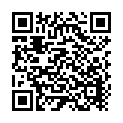
Numbers
There are five sets of numbers: generic, human, multiplicative, locative, and abstract. The five sets of numbers one through ten are listed below. “all” and “many” are listed at the end since they are used much as the numbers are and have the same five sets of forms.
The generic series, illustrated by (1), is used for counting most physical objects. It is also this series that is used for counting in the abstract, e.g. when reciting the numbers, and for telephone numbers, addresses, and so forth.
| (1) | Skwunlai | dustl'us | nintainin'ai. | |
| five-generic | dollars | he-lost | ||
| He lost five dollars. | ||||
The human series is used for counting human beings (2). As is generally the case in Carrier, the grammatical category of human beings includes dogs (3) as well as such other animals as the speaker considers sufficiently human-like.
| (2) | Nane | ts'ekoo | ghus̲da. |
| two-human | women | he is married to | |
| He is married to two women. | |||
| (3) | Tane | lhike | sghatelelh. |
| three-human | dogs | he is going to give me | |
| He is going to give me three dogs. | |||
The multiplicative series often refers to numbers of times, as in (4). However, it is also used with some units of measurement, including periods of time such as weeks (5).
| (4) | 'Awet | Hudson Bay | whut'i-a | inle | dit | la | nenaznintez. |
| now | Hudson Bay | where he lives | it was | four-mult | about | we slept | |
| We camped where the Hudson's Bay factor lives for about four nights. | |||||||
| (5) | Tat | nanilhghel | 'et | uzdalt̲s̲'i. |
| three-mult | week | there | we sat | |
| We were there for three weeks. | ||||
The locative series is used for counting sets of discrete areas. Appropriate uses of the locative forms are illustrated in (6) and (7), where what is counted are a number of discrete areas.
| (6) | Nghun-i | yoh | t̲s̲'iyada | dakelh | yoh | 'uhoont'oh. |
| These | houses | all-locative | Indian | houses | it is | |
| These houses are all Indian houses. | ||||||
| (7) | Sba | bukeyoh | lhada | yoh | whuz̲dla. |
| my father | his trapline | many-locative | house | they are located | |
| On my father's trapline there are many houses. (NT John 14.1) | |||||
The abstract series is used for counting things that have no physical form, such as kinds and ideas, as in (8).
| (8) | Nankoh | ot'en-i | delch'ulh | ootaskulh. |
| two-abstract | kinds | cloth | I will buy | |
| I am going to buy two kinds of material. | ||||
The decades are formed by combining lanezi “ten” with the multiplicative form of one of the smaller numbers. For example, twenty is nat lanezi “twice ten”. Hundreds are formed on the same principle. For example, two hundred is nat lanezi lanezi. More complex numbers are formed using 'o'un “plus”. For example, 321 is tat lanezi lanezi 'o'un nat lanezi 'o'un lhuk'ui “300 plus 20 plus 1”.
The non-generic forms are combined to form larger numbers in the same way as the generic numbers, using multiplicative forms followed by lanezi to form the decades and hundreds, and 'o'un to combine the several powers of ten. However, only the last component takes on the distinctive form of the non-generic series; even when they form part of a complex non-generic number, the decades and hundreds are always in the generic form. For example, the human form of 34 is tat lanezi 'o'un dine, literally “30 plus 4”. dineh is the human form of four, but tat lanezi “thirty” is the generic form.
| Essay List |  |